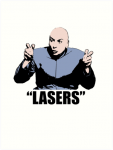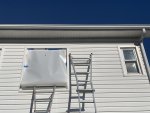It's not clear to me why this is happening. It doesn't seem like the reflection from a flat pane of glass would magnify the sun. Is it because the area being affected is receiving sun directly and from the reflection, in effect getting almost "two full doses?" Does it only happen when the affected area gets both, or can something melt from just the reflection that wouldn't ordinarily melt from just being in the direct sun?
It's the low-e. This article explains it better than me. Also it's winter time here so the angle of the sun is different than summer causing it to be more reflective toward the ground. It does a magnifying glass type effect.
Reflections of a Product Defect - Safety Research & Strategies, Inc.
Some homeowners try to reduce their maintenance time and costs by cladding their homes with vinyl. Others try to reduce their heating and cooling bills by installing energy efficient low-e windows. And if one of these types of homeowners lives close enough to the other, and the angle of the sun...



